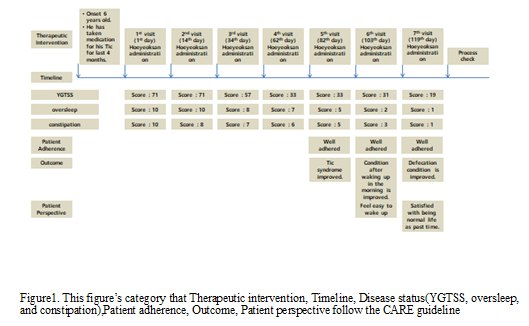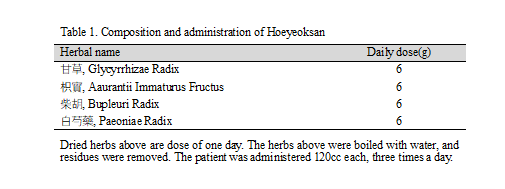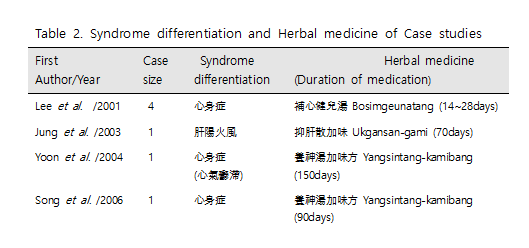Objective : The purpose of this study is to report the improvement in a patient who had Tourette syndrome treated with Hoeyeoksan based on Shanghanlun provisions.
Methods: The symptoms of the patient were checked on days 14, 34, 62, 82, 103, and 119 after administration of Hoeyeoksan. Tourette syndrome was evaluated using Yale Global Tic Severity Scale (YGTSS), and oversleep and constipation were evaluated using visual analog scale (VAS). In addition, new clinical implications for the interpretation of Shanghanlun provision 318 were reviewed.
Results: Daily tics occurred ten times a day for 14 days after the initial diagnosis but decreased to eight times a day after 34 days, six times a day after 62 days, five times a day after 82 days, twice a day after 103 days, and once a day after 119 days after administration of Hoeyeoksan. Oversleep and constipation improved together with Tourette syndrome.
Conclusions: In this study, we observed that Hoeyeoksan had a therapeutic effect by improving the chief complaint of the patient. Hence, the interpretation of Shanghanlun provision 318 must include a patient's behavioral and sleep patterns as predisposing factors of Tourette syndrome.
Key words : Disease Pattern Identification Diagnostic System, Hoeyeoksan (回逆散), Huini-san, Shanghanlun, disease, Tourette syndrome


